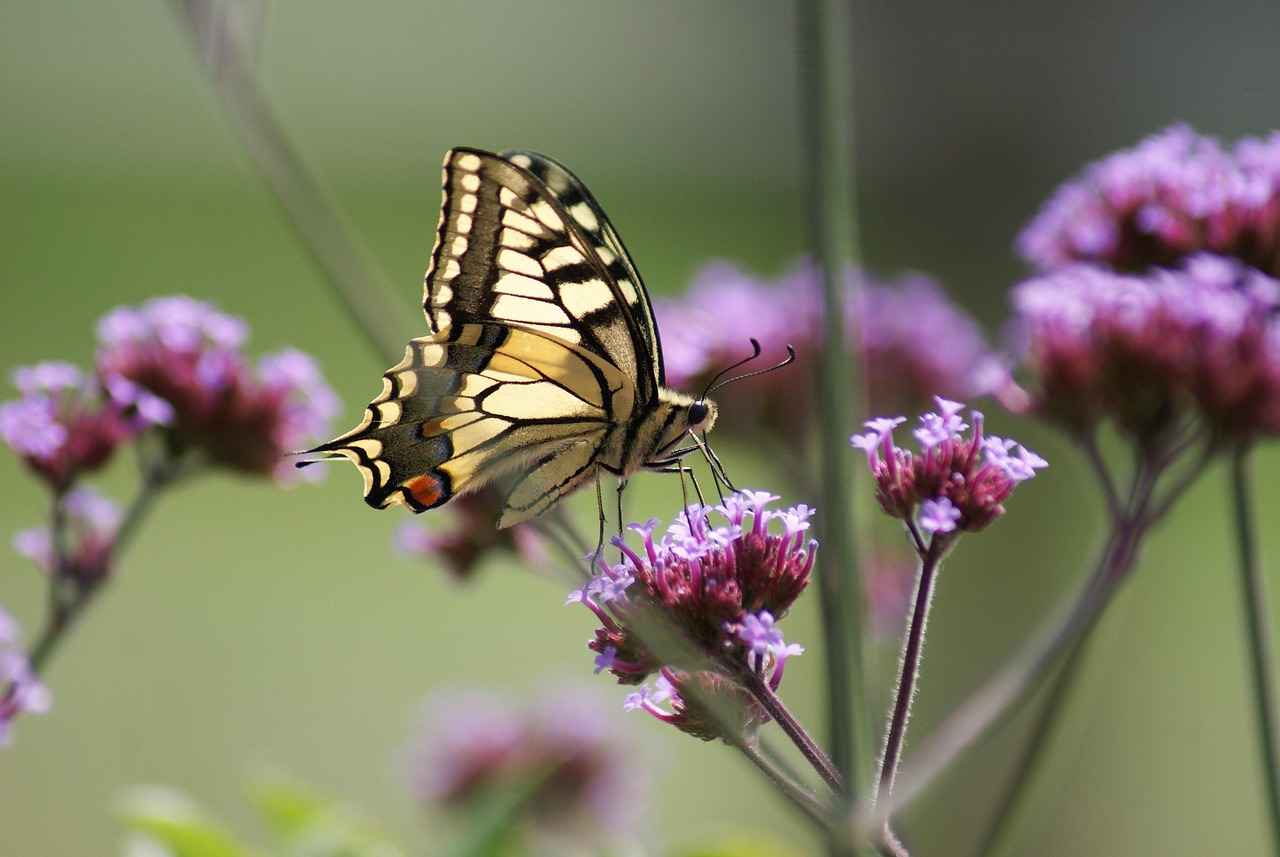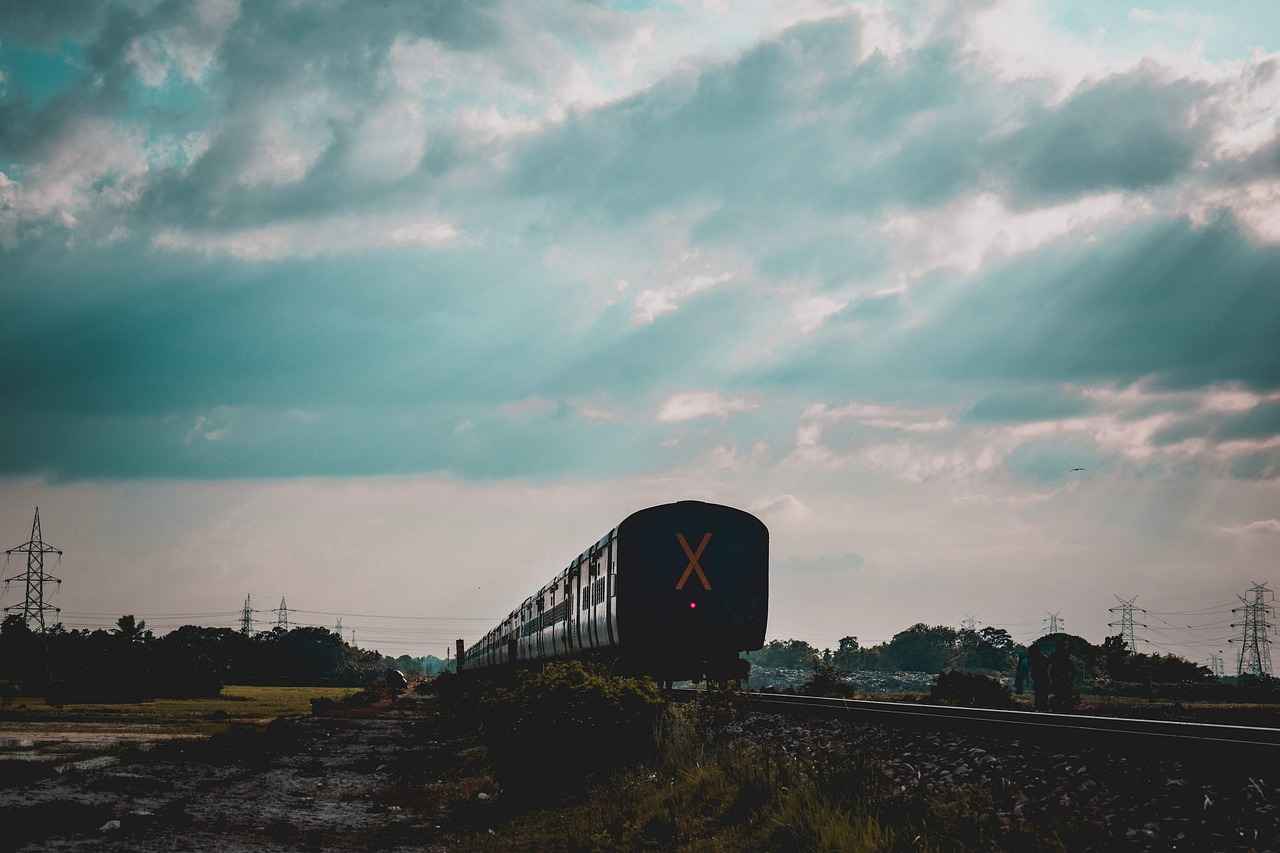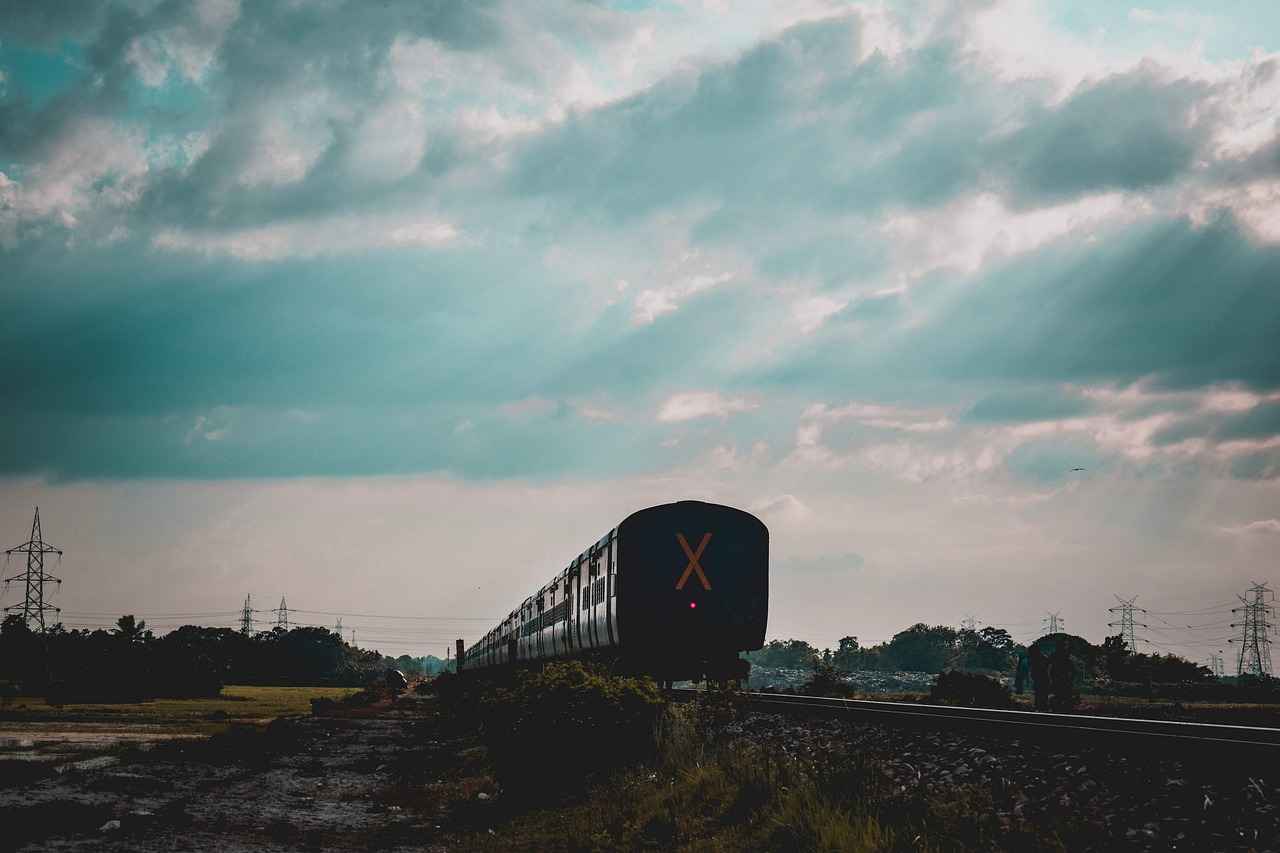Siliguri, nestled in the foothills of the Himalayas, is a vibrant city in West Bengal that captivates visitors with its stunning landscapes and thrilling activities. This hidden gem serves as a perfect getaway for those who seek a harmonious blend of natural beauty and adventure. Whether you’re a nature lover or an adrenaline junkie, Siliguri has something to offer everyone.
1. Exploring the Natural Beauty of Siliguri
The city is enveloped by lush greenery, majestic hills, and winding rivers, creating breathtaking landscapes that are a feast for the eyes. Key attractions include:
- Mahananda Wildlife Sanctuary: A sanctuary rich in biodiversity.
- Ghum Tea Garden: Experience the serene beauty of tea plantations.
- Sevokeshwari Kali Mandir: A temple set against a backdrop of natural splendor.
2. Adventure Activities in Siliguri
For those who crave excitement, Siliguri offers an array of adventure activities:
- Trekking: Various trails cater to all skill levels.
- River Rafting: Experience the rush on the Teesta River.
- Wildlife Safaris: Explore the rich fauna in nearby sanctuaries.
3. Wildlife Sanctuaries Near Siliguri
Siliguri acts as a gateway to several renowned wildlife sanctuaries:
- Mahananda Wildlife Sanctuary: Home to diverse species and picturesque views.
- Jorpokhri Wildlife Sanctuary: Known for its serene lakes and birdwatching opportunities.
4. Cultural Experiences in Siliguri
The city is rich in culture, offering various local festivals and traditional cuisine. Visitors can indulge in:
- Local Festivals: Experience the vibrant celebrations throughout the year.
- Traditional Cuisine: Savor local dishes that reflect the region’s culinary heritage.
5. How to Reach Siliguri
Getting to Siliguri is convenient with multiple transportation options:
- By Air: The nearest airport is Bagdogra Airport.
- By Train: Siliguri is well-connected by rail.
6. Best Time to Visit Siliguri
The ideal time to visit Siliguri is during the winter months, from October to March, when the weather is pleasant for outdoor activities. Each season offers unique experiences, making it essential to plan your visit accordingly.
In conclusion, Siliguri is not just a city; it is a paradise for those who cherish nature and adventure. With its stunning landscapes, thrilling activities, and rich cultural experiences, it promises an unforgettable journey for every traveler.

1. Exploring the Natural Beauty of Siliguri
Siliguri, nestled in the foothills of the majestic Himalayas, is a captivating destination that boasts an abundance of natural beauty. Surrounded by lush greenery, towering hills, and meandering rivers, this city offers breathtaking landscapes that are sure to leave visitors in awe.
One of the most notable features of Siliguri is its rich array of parks and scenic viewpoints. These natural attractions not only provide a peaceful retreat from the hustle and bustle of city life but also serve as perfect spots for photography and relaxation. Among the most popular parks is Darjeeling Himalayan Railway Park, which offers stunning views of the surrounding hills and valleys.
Another highlight is the Mahananda Wildlife Sanctuary, a haven for nature lovers and wildlife enthusiasts. The sanctuary is home to diverse flora and fauna, making it an ideal location for birdwatching and nature trails. Visitors can explore the sanctuary’s lush forests, where they might encounter various species of birds, deer, and other wildlife.
For those seeking panoramic views, the Kalimpong Hills offer breathtaking vantage points. The scenic viewpoints, such as Deolo Hill, provide a stunning backdrop for sunrise and sunset, creating a magical experience for visitors. The vibrant colors of the sky against the lush green hills are a sight to behold.
In addition to these attractions, the rivers that flow through Siliguri, such as the Mahananda River, provide opportunities for recreational activities like fishing and picnicking along the banks. The tranquility of the rivers adds to the serene atmosphere of the region.
In conclusion, Siliguri’s natural beauty is a treasure trove for those who appreciate the great outdoors. With its lush landscapes, diverse wildlife, and scenic viewpoints, it is a destination that promises both adventure and relaxation. Whether you’re a nature enthusiast, an adventure seeker, or simply looking to unwind, Siliguri has something to offer for everyone.

2. Adventure Activities in Siliguri
Siliguri, nestled in the foothills of the majestic Himalayas, is not only a gateway to breathtaking landscapes but also a hotbed for adventure enthusiasts. The region offers a plethora of thrilling activities that cater to adrenaline junkies, making it an ideal destination for those seeking excitement amidst nature.
For those who crave adventure, Siliguri presents an array of exhilarating options such as trekking, river rafting, and wildlife safaris. Each of these activities provides a unique experience, allowing adventurers to immerse themselves in the stunning natural beauty that surrounds the city.
- Trekking: The trekking trails around Siliguri are diverse, offering routes suitable for all skill levels. From beginners to seasoned trekkers, everyone can find a trail that suits their ability and desire for challenge.
- River Rafting: Experience the thrill of navigating through the rapids of the Teesta River, which is renowned for its challenging courses. River rafting here is not just about the adrenaline rush; it also offers spectacular views of the surrounding hills and valleys.
- Wildlife Safaris: Siliguri serves as a gateway to several wildlife sanctuaries, where adventure seekers can embark on safaris to observe diverse flora and fauna in their natural habitats.
The trekking trails around Siliguri cater to all skill levels, leading adventurers through stunning vistas and serene landscapes. Popular routes include:
- Sandakphu Trek: Famous for its panoramic views of the Everest and Kanchenjunga ranges, this trek is a must for any serious trekker.
- Neora Valley Trek: A hidden gem that showcases rich biodiversity and tranquil surroundings, perfect for those looking to escape the crowds.
River rafting in Siliguri offers an exhilarating experience. The Teesta River is the prime location for rafting, providing both calm stretches and challenging rapids. Participants can expect:
- Safety briefings and equipment provided by experienced guides.
- Stunning views of the Himalayan foothills while navigating the river.
- A chance to spot local wildlife along the riverbanks.
In conclusion, Siliguri is a treasure trove for adventure enthusiasts. Whether you prefer the thrill of trekking, the excitement of river rafting, or the wonder of wildlife safaris, this region promises unforgettable experiences that will leave you yearning for more.
2.1. Trekking Trails in the Region
Trekking Trails in the Region
The trekking trails surrounding Siliguri offer a captivating experience for adventurers of all skill levels. Nestled in the foothills of the Himalayas, these trails lead trekkers through stunning vistas and serene landscapes, providing a perfect escape into nature. Below, we explore some of the most popular trekking routes and their unique features.
- Sandakphu Trek
The Sandakphu trek is often regarded as the crown jewel of trekking in this region. It boasts breathtaking panoramic views of the Everest and Kanchenjunga mountain ranges. The trek spans approximately 50 kilometers and typically takes about 4-5 days to complete. Trekkers will encounter diverse flora and fauna, along with quaint villages that offer a glimpse into the local culture.
- Neora Valley Trek
For those seeking a less-traveled path, the Neora Valley trek is an excellent choice. This trek takes you through the Neora Valley National Park, which is rich in biodiversity and home to several endangered species. The lush green forests and tranquil surroundings make it a perfect spot for nature lovers. The trek is moderately challenging and can usually be completed in 3-4 days.
- Rishop Trek
The Rishop trek is ideal for beginners and families, offering a gentle hike through picturesque landscapes. This trail leads to the charming village of Rishop, where trekkers can enjoy stunning views of the surrounding hills and valleys. The trek typically lasts 2-3 days and is perfect for those looking to immerse themselves in the beauty of the region without strenuous challenges.
Each of these trails offers its own unique experience, catering to different preferences and skill levels. Whether you are a seasoned trekker or a novice, the trekking routes around Siliguri promise an unforgettable adventure filled with natural beauty and cultural richness.
2.1.1. Sandakphu Trek
The Sandakphu Trek is not just a journey through the mountains; it is an adventure that promises breathtaking views and an unforgettable experience for trekkers. Nestled in the Himalayas, the trek leads you to the highest point in West Bengal, offering stunning panoramic views of the Everest and Kanchenjunga ranges. This section delves into the challenges and rewards of this remarkable trek.
As one of the most popular trekking destinations in India, the Sandakphu trek spans approximately 50 kilometers and typically takes around five to six days to complete. The trek begins in the quaint village of Manebhanjan and ascends through lush forests, rhododendron blooms, and charming hilltop villages. Trekkers can expect to encounter a variety of terrains, which adds to the trek’s challenges.
- Altitude and Acclimatization: The trek reaches an altitude of about 3,636 meters (11,929 feet), which can lead to altitude sickness if trekkers do not acclimatize properly. It is essential to take rest days and hydrate adequately.
- Weather Conditions: The weather can be unpredictable, with temperatures dropping significantly at night. Trekkers should be prepared for sudden changes and pack appropriate gear.
- Physical Fitness: A good level of physical fitness is crucial. Regular training and preparation can help trekkers manage the strenuous parts of the trail.
Despite these challenges, the rewards of the Sandakphu trek are immense:
- Stunning Views: The trek offers some of the best views of the world’s highest peaks, making every effort worthwhile.
- Unique Flora and Fauna: The region is rich in biodiversity, with opportunities to spot rare species of birds and plants.
- Cultural Encounters: Trekkers will have the chance to interact with the local communities, experiencing their culture and traditions.
In conclusion, the Sandakphu trek is a captivating blend of challenge and reward, making it an essential experience for any adventure enthusiast. With proper preparation and a spirit of adventure, trekkers can create lasting memories amidst the majestic Himalayas.
2.1.2. Neora Valley Trek
Neora Valley National Park is a breathtaking destination for trekkers seeking a unique adventure in a lesser-known area of India. Nestled in the eastern Himalayas, this national park is renowned for its rich biodiversity and tranquil environment, making it a perfect retreat for nature enthusiasts.
The Neora Valley Trek offers an immersive experience through dense forests, vibrant flora, and diverse wildlife. As you embark on this trek, you will encounter an array of plant species, including orchids and medicinal herbs, along with the chance to spot rare animals such as the Red Panda and various species of birds. The trek is not only an adventure but also an opportunity to connect with nature.
| Key Features of Neora Valley Trek | Description |
|---|---|
| Difficulty Level | Moderate to Challenging |
| Duration | 3 to 5 days |
| Best Time to Visit | March to June, September to November |
| Starting Point | Kolakham Village |
During the trek, you’ll traverse through various terrains, from steep ascents to gentle slopes, each offering stunning views of the surrounding mountains and valleys. The serene atmosphere allows trekkers to unwind and appreciate the beauty of nature, away from the hustle and bustle of city life.
As you journey through Neora Valley, be prepared for some unexpected encounters with local wildlife and breathtaking landscapes. The trek is not just about reaching the destination; it’s about the experiences and memories created along the way. Whether you are a seasoned trekker or a beginner, the Neora Valley Trek promises an unforgettable adventure.
In conclusion, the Neora Valley Trek is a hidden gem that deserves a spot on every trekker’s bucket list. With its stunning biodiversity and peaceful surroundings, it offers a unique experience that is both challenging and rewarding. Prepare yourself for an adventure that will leave you with lasting memories and a deeper appreciation for nature.
2.2. River Rafting Adventures
River rafting in Siliguri is an exhilarating experience that attracts adventure seekers from all over. Nestled in the foothills of the majestic Himalayas, Siliguri offers some of the most thrilling rafting opportunities in India. The region is blessed with several rivers, each providing a unique rafting experience that caters to both novices and seasoned adventurers.
The Teesta River is one of the most popular destinations for rafting in Siliguri. Known for its fast-flowing rapids and stunning scenery, the Teesta offers various levels of difficulty, making it suitable for everyone. The rafting season typically runs from March to June, when the water levels are ideal for an exciting ride. Adventurers can expect to navigate through exciting rapids, enjoy breathtaking views of the surrounding hills, and experience the thrill of the rush.
Another notable river for rafting is the Bhagirathi River. This river is known for its challenging rapids and is recommended for those with some rafting experience. Rafting on the Bhagirathi is not just about the thrill; it also provides a chance to immerse oneself in the region’s natural beauty, with lush forests and wildlife lining the banks.
- What to Expect:
- Safety Briefing: All rafting tours begin with a comprehensive safety briefing to ensure participants are well-prepared.
- Equipment: High-quality gear, including life jackets and helmets, is provided to ensure safety.
- Guided Tours: Experienced guides accompany each group, offering tips and ensuring a safe adventure.
- Best Time for Rafting: The ideal months for rafting in Siliguri are from March to June, when the weather is pleasant and water levels are optimal.
In conclusion, river rafting in Siliguri promises an unforgettable adventure filled with excitement and natural beauty. Whether you are a beginner or an experienced rafter, the rivers of Siliguri offer something for everyone, making it a must-visit destination for adventure enthusiasts.

3. Wildlife Sanctuaries Near Siliguri
Siliguri, a charming city nestled in the foothills of the Himalayas, is not only a hub for adventure seekers but also a gateway to some of the most stunning wildlife sanctuaries in India. These sanctuaries are home to a rich variety of flora and fauna, making them a must-visit for nature lovers and wildlife enthusiasts.
This section will delve into the nearby sanctuaries, highlighting their unique wildlife and the experiences they offer.
| Sanctuary Name | Location | Key Wildlife | Best Time to Visit |
|---|---|---|---|
| Mahananda Wildlife Sanctuary | Near Siliguri, West Bengal | Royal Bengal Tiger, Indian Elephant, Various Bird Species | October to March |
| Jorpokhri Wildlife Sanctuary | Near Siliguri, West Bengal | Various Bird Species, Barking Deer, Wild Boar | November to February |
| Neora Valley National Park | Kalimpong District, West Bengal | Red Panda, Himalayan Black Bear, Clouded Leopard | March to June |
Mahananda Wildlife Sanctuary is a prime example of biodiversity in the region. Spanning over 158 square kilometers, this sanctuary is home to a variety of animals, including the majestic Royal Bengal Tiger and numerous bird species. Visitors can enjoy guided safaris that offer a chance to spot these incredible creatures in their natural habitat.
Jorpokhri Wildlife Sanctuary, known for its tranquil lakes, is a paradise for bird watchers. The sanctuary is inhabited by diverse bird species, making it an ideal spot for photography and nature walks. The best time to visit is during the winter months when migratory birds flock to the area.
Another gem is the Neora Valley National Park, famous for its rich flora and fauna, including the elusive Red Panda. The park offers a serene trekking experience, allowing visitors to immerse themselves in nature while exploring the lush green landscapes.
In conclusion, the wildlife sanctuaries near Siliguri not only showcase the natural beauty of the region but also provide unique opportunities to observe and appreciate the diverse wildlife. Whether you are a seasoned wildlife enthusiast or a casual traveler, these sanctuaries promise unforgettable experiences.
3.1. Mahananda Wildlife Sanctuary
Mahananda Wildlife Sanctuary is a stunning natural reserve located near Siliguri, West Bengal. It is renowned for its rich biodiversity and breathtaking landscapes, making it a must-visit destination for wildlife enthusiasts and nature lovers alike. This sanctuary spans over 158 square kilometers and is home to a variety of flora and fauna, offering visitors a unique glimpse into the region’s ecological wealth.
The sanctuary is primarily known for its diverse range of wildlife, including species such as the Bengal tiger, Indian elephant, and various deer species. Birdwatchers will also delight in spotting numerous avian species, with over 200 types of birds recorded in the area. The sanctuary’s rich vegetation, comprising tropical forests and grasslands, provides an ideal habitat for these animals, making it a perfect location for wildlife photography and observation.
Visitors to Mahananda Wildlife Sanctuary can enjoy a variety of experiences. Nature trails wind through the lush greenery, allowing guests to immerse themselves in the serene environment while observing wildlife in their natural habitat. Guided tours are available, providing insights into the ecosystem and the importance of conservation efforts in the region.
- Best Time to Visit: The ideal time to explore the sanctuary is from October to March, when the weather is pleasant and wildlife sightings are more frequent.
- Visitor Facilities: The sanctuary offers basic amenities, including watchtowers and resting spots, enhancing the overall visitor experience.
- Photography Opportunities: With its stunning landscapes and diverse wildlife, Mahananda is a paradise for photographers.
In conclusion, Mahananda Wildlife Sanctuary is not just a destination; it is an experience that connects visitors with nature and wildlife. Whether you are a seasoned naturalist or a casual traveler, the sanctuary promises unforgettable moments surrounded by the beauty of the wilderness.
3.2. Jorpokhri Wildlife Sanctuary
Jorpokhri Wildlife Sanctuary is a captivating destination nestled in the lush landscapes of West Bengal, India. Renowned for its tranquil lakes and an impressive variety of bird species, this sanctuary offers a unique experience for nature enthusiasts and wildlife photographers alike.
The sanctuary is home to two pristine lakes, Jorpokhri and Khokrajhar, which are surrounded by dense forests and rolling hills. These lakes not only provide a picturesque setting but also serve as vital habitats for numerous aquatic and terrestrial species. Birdwatchers will find themselves enchanted by the diverse avian population, which includes migratory birds during the winter months, making it a prime location for spotting rare species.
| Attraction | Description |
|---|---|
| Jorpokhri Lake | A serene lake surrounded by lush greenery, ideal for birdwatching and photography. |
| Khokrajhar Lake | This lake is a hotspot for migratory birds, especially from November to February. |
| Flora and Fauna | Home to various species of plants, mammals, and reptiles, enriching the biodiversity of the sanctuary. |
The best time to visit Jorpokhri Wildlife Sanctuary is from October to March, when the weather is pleasant and the bird activity is at its peak. During this period, visitors can witness the breathtaking sight of migratory birds flocking to the lakes, creating a vibrant and lively atmosphere.
In addition to birdwatching, the sanctuary offers opportunities for nature walks and wildlife photography. The tranquil environment and stunning landscapes make it an ideal spot for those looking to escape the hustle and bustle of city life.
In conclusion, Jorpokhri Wildlife Sanctuary is not just a haven for birds but also a perfect retreat for anyone looking to immerse themselves in nature’s beauty. Whether you are a seasoned birdwatcher or a casual nature lover, this sanctuary promises a memorable experience that showcases the rich biodiversity of West Bengal.

4. Cultural Experiences in Siliguri
Siliguri is not only a haven for nature lovers and adventure seekers but also a vibrant hub of cultural experiences. The city’s rich tapestry of traditions, festivals, and culinary delights offers visitors a chance to immerse themselves in the local way of life. This section explores the cultural aspects that make Siliguri a unique destination.
- Local Traditions: Siliguri is home to a diverse population, resulting in a melting pot of cultures. The local traditions are deeply rooted in the customs of various communities, including the Bengali, Gorkhas, and Biharis. Visitors can witness traditional dances, music, and art forms that are celebrated throughout the year.
- Festivals: The city comes alive during various festivals, showcasing its rich cultural heritage. Notable celebrations include:
- Dussehra: A vibrant festival symbolizing the victory of good over evil, celebrated with elaborate processions and rituals.
- Durga Puja: One of the most significant festivals in West Bengal, marked by beautifully crafted idols, cultural performances, and community feasting.
- Tihar: Celebrated by the Nepali community, this festival honors animals and the bond between humans and nature.
- Culinary Delights: Siliguri’s food scene is a reflection of its cultural diversity. The local cuisine features a mix of flavors and ingredients, with popular dishes such as:
- Momos: Steamed dumplings filled with meat or vegetables, a favorite among locals and visitors alike.
- Thukpa: A hearty noodle soup that is especially popular during the colder months.
- Bengali Sweets: Don’t miss trying Rasgulla and Sandesh, which are must-have treats for anyone visiting the region.
In conclusion, Siliguri offers a rich cultural experience that complements its natural beauty and adventure activities. Engaging with local traditions, partaking in vibrant festivals, and savoring delicious cuisine allows visitors to gain a deeper understanding of this unique city.
4.1. Local Festivals and Celebrations
Siliguri, a city that embodies the essence of cultural diversity, is renowned for its vibrant festivals that bring together people from different backgrounds to celebrate life, tradition, and community. These festivals not only reflect the rich heritage of the region but also highlight the unity among its residents. In this section, we will explore some of the key festivals celebrated in Siliguri and the unique ways in which they are observed.
- Dussehra: This major Hindu festival marks the victory of good over evil. In Siliguri, it is celebrated with grand processions, elaborate decorations, and cultural performances. The community comes together to witness the burning of effigies of Ravana, symbolizing the triumph of Lord Rama.
- Durga Puja: One of the most significant festivals in West Bengal, Durga Puja is celebrated with much fervor in Siliguri. The city transforms into a vibrant hub of art and culture, with beautifully crafted idols of Goddess Durga displayed in various pandals. The festivities include traditional music, dance, and feasting, making it a time for family reunions and community bonding.
- Holi: The festival of colors, Holi, is celebrated in Siliguri with great enthusiasm. People of all ages participate in throwing colored powders and water at each other, symbolizing the arrival of spring. The atmosphere is filled with laughter, music, and delicious sweets, making it a joyous occasion for everyone.
- Eid: The Muslim community in Siliguri celebrates Eid with prayers, feasting, and community gatherings. It is a time for sharing and giving, where families come together to enjoy special dishes. The spirit of unity and brotherhood is evident as people from different backgrounds join in the celebrations.
These festivals not only showcase the rich cultural tapestry of Siliguri but also foster a sense of community and belonging among its residents. Each celebration offers a glimpse into the traditions and values that are cherished by the people, making Siliguri a truly vibrant city.
4.2. Traditional Cuisine of Siliguri
Siliguri, a bustling city in West Bengal, is not only known for its breathtaking landscapes and adventure activities but also for its vibrant culinary scene. The local cuisine is a delightful fusion of various flavors, influenced by the diverse cultures that coexist in the region. This section delves into the traditional dishes of Siliguri and the best places to savor these culinary delights.
The city’s culinary offerings range from street food to exquisite dining experiences, showcasing a variety of ingredients and cooking styles. Here are some must-try dishes:
- Momo: These steamed dumplings, filled with either vegetables or meat, are a popular snack. They are often served with a spicy dipping sauce and can be found at numerous street stalls across the city.
- Thukpa: A hearty noodle soup that originated from Tibet, Thukpa has become a favorite in Siliguri. It is typically made with meat or vegetables and flavored with aromatic spices.
- Darjeeling Tea: Siliguri is close to the famous tea gardens of Darjeeling. A cup of this aromatic tea is a must-have for visitors, offering a taste of the region’s rich tea culture.
- Fish Curry: The local fish curry, often made with freshwater fish, is a staple in many households. It is usually prepared with a blend of spices and served with steamed rice.
For those looking to explore the best places to enjoy these dishes, here are some recommended spots:
| Restaurant Name | Specialty | Location |
|---|---|---|
| Gharana | Momos | Near Siliguri Junction |
| Thukpa House | Thukpa | Hill Cart Road |
| Tea Garden Cafe | Darjeeling Tea | Sevoke Road |
| Fish Delight | Fish Curry | Bidhan Market |
In conclusion, the culinary landscape of Siliguri is a reflection of its rich cultural heritage. From street food to fine dining, there is something to satisfy every palate. Visitors are encouraged to explore these local flavors to truly experience the essence of Siliguri.

5. How to Reach Siliguri
Reaching Siliguri is a straightforward endeavor, thanks to the variety of transportation options available for travelers. This section will guide you through the most effective ways to access this hidden paradise, ensuring a smooth journey whether you choose to travel by air, rail, or road.
5.1. By Air: Nearest Airport
The nearest airport to Siliguri is Bagdogra Airport, located approximately 11 kilometers from the city center. This airport serves as a crucial hub, connecting Siliguri with major cities across India, including Kolkata, Delhi, and Mumbai. Airlines such as Air India, IndiGo, and SpiceJet offer regular flights, making it convenient for travelers.
Upon arrival at Bagdogra, visitors can easily hire taxis or use ride-sharing services to reach Siliguri. The airport is equipped with essential facilities, including lounges, currency exchange, and food options, ensuring a comfortable start to your journey.
5.2. By Train: Railway Connectivity
Siliguri boasts excellent railway connectivity, making it accessible for those who prefer traveling by train. The Siliguri Junction is a major railway station, connecting the city to various parts of India. Popular trains like the Darjeeling Mail and Kanchankanya Express run frequently, providing a comfortable travel experience.
Booking train tickets can be done easily through the Indian Railways website or mobile apps. It is advisable to book your tickets in advance, especially during peak tourist seasons.
5.3. By Road: Scenic Drives
Traveling to Siliguri by road offers a scenic experience, with picturesque landscapes along the way. The city is well-connected by highways, and buses run regularly from nearby cities like Kolkata and Darjeeling. Private taxis and rental cars are also available for those who prefer a more personalized journey.
For a memorable trip, consider taking the NH27 route, which offers beautiful views of the countryside and the foothills of the Himalayas.
In conclusion, whether you opt for air, rail, or road travel, reaching Siliguri is both convenient and enjoyable. With the right planning and information, your journey to this hidden paradise can be a delightful experience.
5.1. By Air: Nearest Airport
The closest airport to Siliguri is Bagdogra Airport, a vital hub that connects this vibrant city to several major cities across India. Located approximately 11 kilometers from Siliguri, Bagdogra Airport serves as a gateway for travelers heading to the picturesque hills of Darjeeling, Kalimpong, and the lush forests of Sikkim.
Bagdogra Airport operates numerous flights daily, providing domestic connections to cities such as Kolkata, Delhi, Mumbai, and Guwahati. Additionally, there are occasional international flights, making it a convenient choice for both domestic and international travelers.
Travelers can expect a range of facilities at Bagdogra Airport, ensuring a comfortable experience. The airport features:
- Modern Terminals: Two terminals for domestic and international flights, equipped with essential amenities.
- Food and Beverage Options: A variety of eateries and cafes offering local and international cuisine.
- Shopping: Duty-free shops and local handicraft stores for souvenirs and gifts.
- Transportation Services: Taxi services and car rentals available just outside the terminal for easy access to Siliguri and surrounding areas.
For travelers planning to visit Siliguri, it is advisable to book flights in advance, especially during peak tourist seasons. The airport’s proximity to the city makes it a convenient starting point for exploring the natural beauty and adventure opportunities that Siliguri has to offer.
In conclusion, Bagdogra Airport is not just a transit point but a gateway to the enchanting landscapes and thrilling experiences that await in and around Siliguri.
5.2. By Train: Railway Connectivity
Siliguri is a bustling city in West Bengal, strategically located as a junction for several major train routes. Its railway connectivity makes it an ideal gateway for travelers looking to explore the enchanting landscapes of the region and beyond.
The Indian Railways operates numerous trains connecting Siliguri to various parts of India, making it accessible for tourists and locals alike. Here are some key train routes that you should consider:
| Train Route | Destination | Travel Time |
|---|---|---|
| Darjeeling Mail | Kolkata | Approximately 12 hours |
| Kamakhya Express | Guwahati | Approximately 16 hours |
| Uttar Banga Express | Malda Town | Approximately 6 hours |
| New Jalpaiguri – Siliguri Link | New Jalpaiguri | Approximately 1 hour |
When planning your journey, it is essential to book tickets in advance, especially during peak travel seasons. Here are some tips for booking train tickets to Siliguri:
- Use the Official Website: Always book through the official Indian Railways website or trusted travel apps to ensure safe transactions.
- Check Availability: Monitor train availability and opt for sleeper class for a comfortable journey.
- Be Flexible: If possible, be flexible with your travel dates to secure better deals and seat availability.
- Consider Tatkal Booking: For last-minute travel, consider the Tatkal scheme, which allows you to book tickets a day in advance.
In conclusion, Siliguri’s railway connectivity not only makes it easily accessible but also opens up a world of travel opportunities for adventurers and nature lovers. Whether you’re heading to the hills of Darjeeling or the plains of Assam, the train journey promises to be an integral part of your travel experience.

6. Best Time to Visit Siliguri
Understanding the best time to visit Siliguri can significantly enhance your travel experience. This vibrant city, nestled in the foothills of the Himalayas, offers a unique charm throughout the year. The climate varies distinctly with the seasons, influencing the activities available and the overall ambiance of the region.
6.1. Weather Patterns Throughout the Year
Siliguri experiences four distinct seasons: winter, spring, monsoon, and autumn. Each season presents a different aspect of the city’s beauty:
- Winter (December to February): The temperature ranges from 5°C to 20°C. This is an ideal time for sightseeing and outdoor activities, as the weather is cool and pleasant.
- Spring (March to May): Temperatures rise to between 15°C and 30°C. This season is perfect for trekking and exploring the lush landscapes as flowers bloom and nature flourishes.
- Monsoon (June to September): Heavy rains can be expected, with temperatures around 20°C to 30°C. While the rains can hinder outdoor activities, they also rejuvenate the landscape, creating stunning scenery.
- Autumn (October to November): The weather is mild, with temperatures ranging from 10°C to 25°C. This is considered one of the best times to visit, as the skies are clear and the natural beauty is at its peak.
6.2. Seasonal Highlights and Events
Visiting Siliguri during specific months can offer unique experiences:
- Durga Puja (September/October): Experience the vibrant cultural celebrations during this major festival, showcasing local traditions and community spirit.
- Tea Gardens Tour (March to May): Spring is the perfect time to explore the famous tea gardens, where you can witness the tea picking process and enjoy fresh brews.
- Wildlife Spotting (November to February): The cooler months are ideal for visiting nearby wildlife sanctuaries, as animals are more active during this time.
In conclusion, the best time to visit Siliguri largely depends on your interests and preferred activities. Whether you seek adventure, cultural experiences, or simply wish to enjoy the breathtaking landscapes, planning your trip around the seasonal highlights can lead to an unforgettable journey.
6.1. Weather Patterns Throughout the Year
Siliguri experiences a variety of weather patterns throughout the year, making it a fascinating destination for travelers seeking different experiences in each season. Understanding these weather conditions can greatly enhance your visit, allowing you to plan your activities accordingly.
- Winter (December to February): The winter months in Siliguri are cool and pleasant, with temperatures ranging from 5°C to 20°C. This is an ideal time for outdoor activities such as trekking and exploring the natural beauty of the region. The clear skies provide stunning views of the Himalayas, making it a favorite season for tourists.
- Spring (March to May): As the temperature begins to rise, Siliguri transforms into a vibrant landscape filled with blooming flowers. Temperatures during spring can range from 15°C to 30°C. This is a great time for birdwatching and visiting local parks, as the flora and fauna are at their most lively.
- Monsoon (June to September): The monsoon season brings heavy rainfall, with temperatures ranging from 20°C to 30°C. While the rains may deter some visitors, this season rejuvenates the landscape, making it lush and green. It is an excellent time for those who enjoy the serenity of nature and want to experience the region’s vibrant ecosystem.
- Autumn (October to November): Autumn is marked by a gradual decrease in temperature, ranging from 10°C to 25°C. The weather is generally dry and clear, making it perfect for sightseeing and adventure activities. This is also the time for various local festivals, adding a cultural dimension to your visit.
In conclusion, each season in Siliguri offers unique experiences, from the cool and crisp winter to the vibrant spring and the serene monsoon. Understanding these weather patterns will help you make the most of your visit to this hidden paradise.
6.2. Seasonal Highlights and Events
Siliguri is a destination that transforms with the seasons, offering a variety of attractions and events throughout the year. Understanding these seasonal highlights can significantly enhance your travel experience. Below, we explore the best times to visit Siliguri and the unique events that characterize each season.
- Spring (March to May): This is one of the most beautiful times to visit Siliguri. The weather is pleasant, making it ideal for outdoor activities. The blooming flowers and lush greenery create a picturesque landscape. Visitors can enjoy the Holi festival, where vibrant colors fill the streets, and the local culture is on full display.
- Summer (June to August): Although the summer months can be warm, this is also the time when the region experiences the monsoon. The rains rejuvenate the landscape, turning it into a lush paradise. During this season, the Tea Gardens around Siliguri are particularly stunning, offering tours and tastings that highlight the local tea culture.
- Autumn (September to November): As the rains subside, the weather becomes cooler and more comfortable. This is the perfect time for trekking and exploring the nearby hills. The Dussehra festival is celebrated with great fervor, showcasing traditional dances, music, and delicious local cuisine.
- Winter (December to February): Winter brings a chill to Siliguri, making it a cozy time to visit. The clear skies and crisp air offer stunning views of the Himalayan ranges. This season is also marked by the Christmas celebrations, where the city lights up with decorations, and various markets come alive with festive cheer.
In conclusion, each season in Siliguri presents its own charm and set of activities. Planning your visit around these seasonal highlights ensures that you experience the best of what this hidden paradise has to offer. Whether it’s the vibrant festivals of spring or the tranquil beauty of winter, Siliguri promises unforgettable experiences year-round.
Frequently Asked Questions
- What is the best time to visit Siliguri?
The best time to visit Siliguri is between October and March when the weather is pleasant and ideal for outdoor activities. During these months, you can enjoy the stunning landscapes and partake in trekking and wildlife experiences without the sweltering heat.
- What adventure activities can I do in Siliguri?
Siliguri is a playground for adventure enthusiasts! You can indulge in thrilling activities like trekking, river rafting, and wildlife safaris. Whether you’re scaling the heights of the Sandakphu trek or navigating the rapids of nearby rivers, there’s something for everyone!
- How do I reach Siliguri?
Reaching Siliguri is a breeze! You can fly into Bagdogra Airport, which is just a short drive away, or take a train to one of its major railway stations. The city is well-connected by road, making it easy to plan your journey.
- Are there any wildlife sanctuaries near Siliguri?
Absolutely! Siliguri is the gateway to several wildlife sanctuaries, including Mahananda and Jorpokhri. These sanctuaries are home to diverse flora and fauna, offering visitors a chance to witness nature’s beauty up close.
- What local dishes should I try in Siliguri?
You can’t visit Siliguri without tasting its delicious traditional cuisine! Be sure to try local favorites like momos, thukpa, and various fish preparations. The food scene here is a delightful blend of flavors that will leave your taste buds dancing!


























































